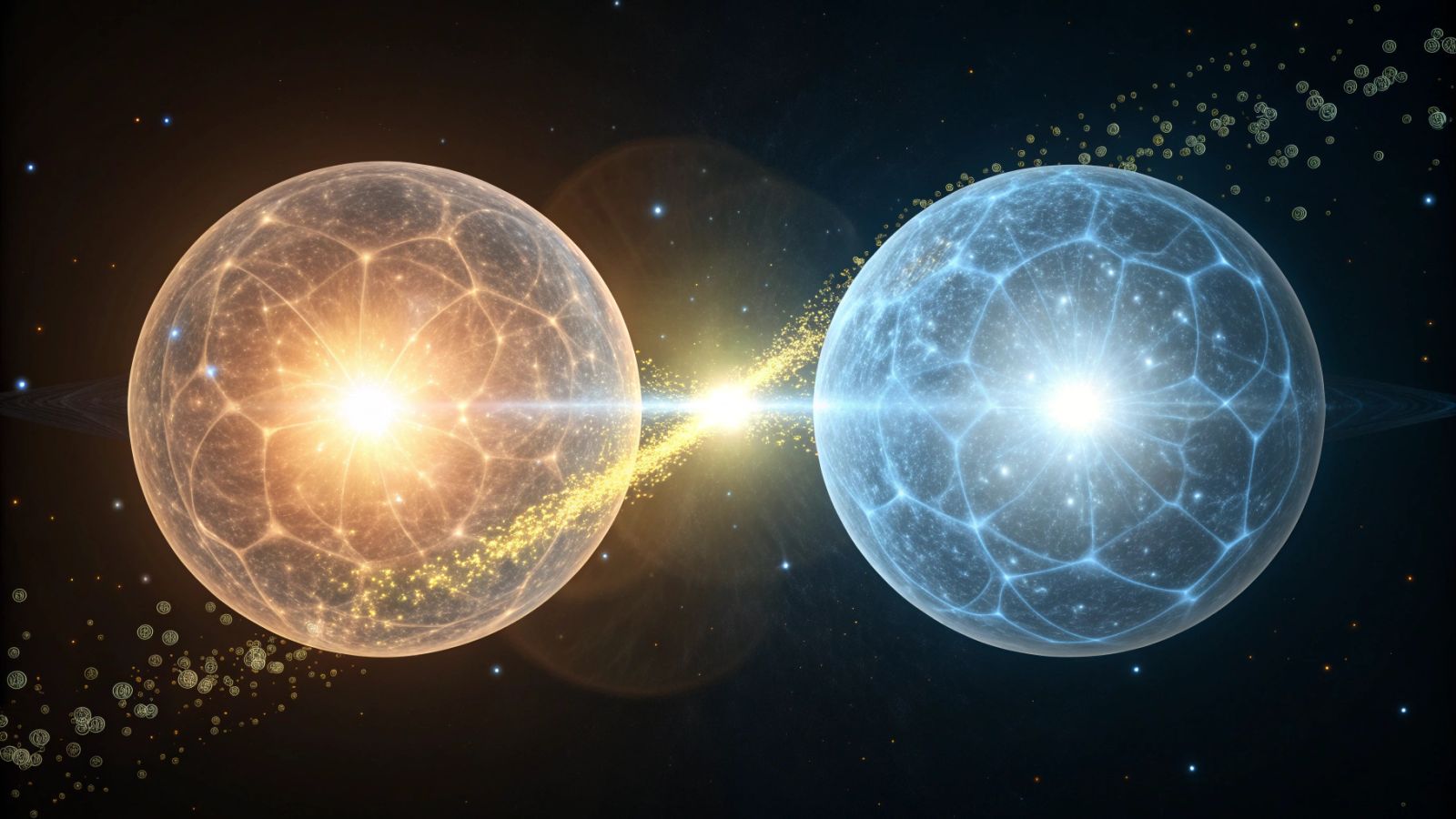🧩 Quantum correlations without entanglement: a surprising discovery
Follow us on Google News (click on ☆)
As early as the 1930s, physicists discovered a surprising effect: quantum entanglement. Two particles can remain invisibly linked, their properties remaining correlated even when separated by large distances. Albert Einstein nicknamed this phenomenon "spooky action at a distance," because a measurement on one particle seems to immediately affect the other, without information transmission faster than light. This "non-local" behavior upends our classical references while remaining compatible with relativity.

Until now, violations of "Bell inequalities" – a mathematical test proving that nature behaves in a non-classical way – were almost always associated with entanglement. But a recent study published in Science Advances challenges this idea. Researchers have shown that non-entangled photons could also violate these inequalities.
Their experimental setup relied on a laser sending photons into a particular crystal. In this configuration, it becomes impossible to know which photon comes from which source: their origin is indistinguishable. The physicists then measured the photons with separate detectors and observed unexpected correlations.
The results showed a clear violation of Bell inequalities, far exceeding the statistical threshold. But here, the cause is not entanglement, but a fundamental principle: quantum indistinguishability. In other words, since the photons are identical and it is impossible to trace their exact path, they produce collective correlations, giving rise to non-local behavior.
This discovery suggests there are multiple ways to obtain "strange quantum effects" and not only through entanglement. This broadens our vision of quantum mechanics and opens new avenues for its applications, particularly in quantum information technologies.
However, the researchers highlight certain limitations. The experiment relies on a posteriori selection of detected photons, which may introduce biases, and the phase settings of the detectors could influence the results. Technical improvements are planned to confirm and strengthen these observations.
Quantum indistinguishability
In quantum physics, identical particles – such as photons – cannot be distinguished individually. Unlike two marbles or two balls that can be tracked separately, these particles behave as if their identity merges into a whole.
This principle, called indistinguishability, leads to unique interference and correlation phenomena. It is already known to explain superfluidity or superconductivity, and plays a central role in many quantum technologies.
In this study, indistinguishability by path identity allowed non-entangled photons to reproduce effects previously attributed to entanglement. This expands our understanding of quantum mechanisms and could inspire new methods to create or stabilize quantum states useful in computing or metrology.
Bell inequalities
Bell inequalities, formulated in the 1960s by physicist John Bell, are a key tool for distinguishing classical correlations from truly quantum correlations. If these inequalities are respected, classical physics is sufficient to explain the results. If they are violated, it is a sign of quantum non-locality.
Historically, these violations confirmed the existence of entanglement. But the recent experiment shows they can appear even without this traditional link, thanks to indistinguishability.
This challenges a widely accepted idea and pushes physicists to consider new experiments, where other quantum properties – and not just entanglement – could produce non-classical behaviors. Ultimately, this research could simplify certain experimental setups and reveal still unknown aspects of quantum mechanics.